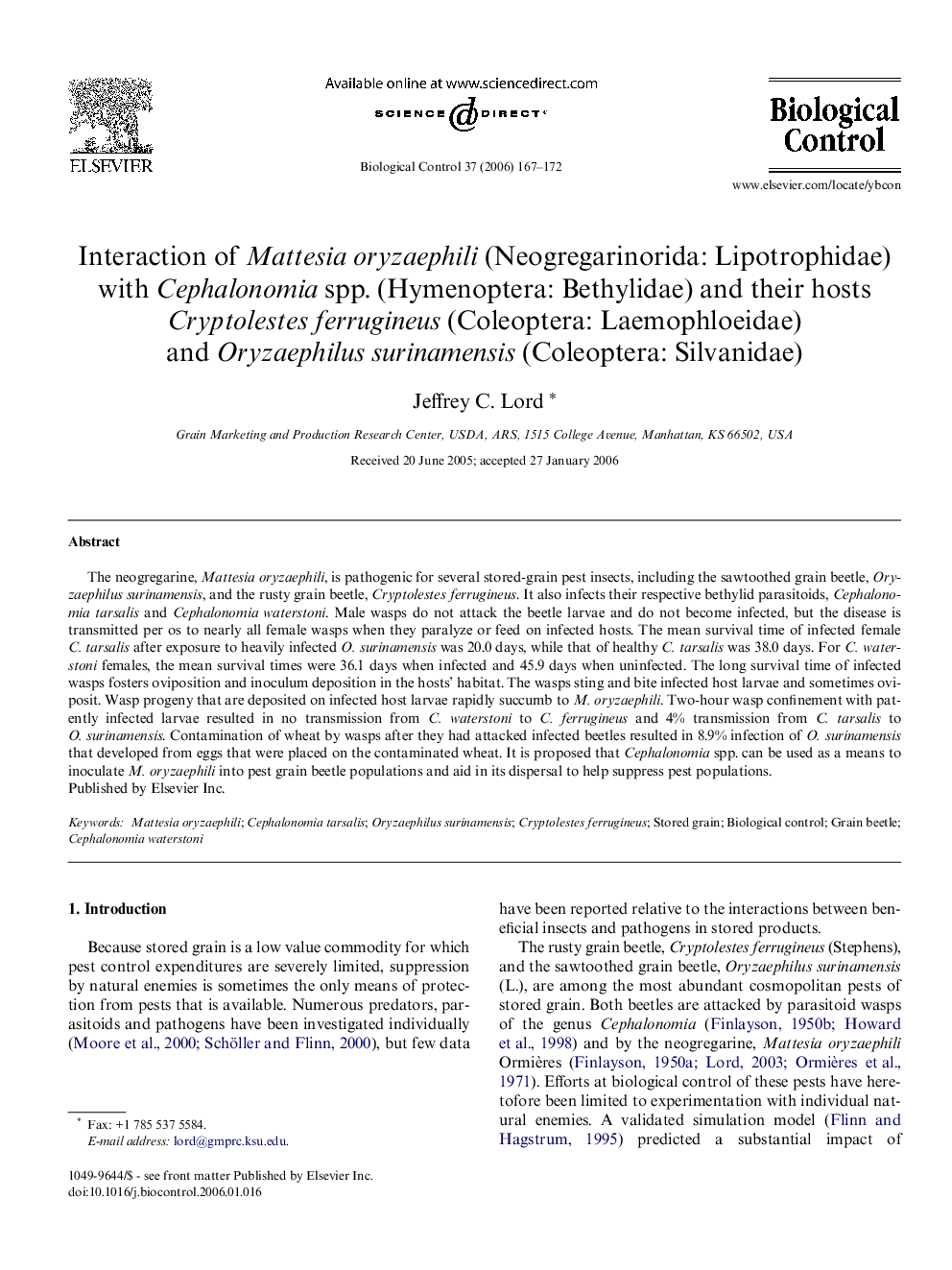| کد مقاله | کد نشریه | سال انتشار | مقاله انگلیسی | نسخه تمام متن |
|---|---|---|---|---|
| 4505453 | 1321146 | 2006 | 6 صفحه PDF | دانلود رایگان |
عنوان انگلیسی مقاله ISI
Interaction of Mattesia oryzaephili (Neogregarinorida: Lipotrophidae) with Cephalonomia spp. (Hymenoptera: Bethylidae) and their hosts Cryptolestes ferrugineus (Coleoptera: Laemophloeidae) and Oryzaephilus surinamensis (Coleoptera: Silvanidae)
دانلود مقاله + سفارش ترجمه
دانلود مقاله ISI انگلیسی
رایگان برای ایرانیان
کلمات کلیدی
موضوعات مرتبط
علوم زیستی و بیوفناوری
علوم کشاورزی و بیولوژیک
علوم زراعت و اصلاح نباتات
پیش نمایش صفحه اول مقاله

چکیده انگلیسی
The neogregarine, Mattesia oryzaephili, is pathogenic for several stored-grain pest insects, including the sawtoothed grain beetle, Oryzaephilus surinamensis, and the rusty grain beetle, Cryptolestes ferrugineus. It also infects their respective bethylid parasitoids, Cephalonomia tarsalis and Cephalonomia waterstoni. Male wasps do not attack the beetle larvae and do not become infected, but the disease is transmitted per os to nearly all female wasps when they paralyze or feed on infected hosts. The mean survival time of infected female C. tarsalis after exposure to heavily infected O. surinamensis was 20.0 days, while that of healthy C. tarsalis was 38.0 days. For C. waterstoni females, the mean survival times were 36.1 days when infected and 45.9 days when uninfected. The long survival time of infected wasps fosters oviposition and inoculum deposition in the hosts' habitat. The wasps sting and bite infected host larvae and sometimes oviposit. Wasp progeny that are deposited on infected host larvae rapidly succumb to M. oryzaephili. Two-hour wasp confinement with patently infected larvae resulted in no transmission from C. waterstoni to C. ferrugineus and 4% transmission from C. tarsalis to O. surinamensis. Contamination of wheat by wasps after they had attacked infected beetles resulted in 8.9% infection of O. surinamensis that developed from eggs that were placed on the contaminated wheat. It is proposed that Cephalonomia spp. can be used as a means to inoculate M. oryzaephili into pest grain beetle populations and aid in its dispersal to help suppress pest populations.
ناشر
Database: Elsevier - ScienceDirect (ساینس دایرکت)
Journal: Biological Control - Volume 37, Issue 2, May 2006, Pages 167-172
Journal: Biological Control - Volume 37, Issue 2, May 2006, Pages 167-172
نویسندگان
Jeffrey C. Lord,